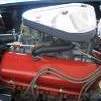Leaderboard
Popular Content
Showing content with the highest reputation on 10/17/2017 in all areas
-
Well, I've gone and bought myself a plane. Been doing research on what I wanted for my mission/budget for a couple months now, and came across this beauty in my price range. Took a test-flight in her and fell in love. This aircraft has been very well taken care of, too. Couldn't be happier. Now just to knock out 10hr of dual instruction so my insurance will let me fly it... Got two pictures right now, I'm sure more will be forthcoming.8 points
-
Since the inception of The Money Flyer way back from May 2012, I have read every single magazine online. Each edition has fresh information and tips and techniques which are timely and appropriate for the beginning Mooney owners as well as the most experienced pilots. This is a product of the hard work of Phil Corman from California. And the reason I recognize him is because, like us at the Mooney Summit, he provides his product completely for free. Yeah, he might get a few dollar from advertising, but not nearly enough to defray the cost of the man hours this requires. He and Jim work on the magazine full time and has about 10 contributors to help in the contents. This is no easy job. Especially when you have another job to do so he can pay the costs of producing The Flyer. Speaking with Phil today, he thinks like Mike and I. We love the Mooney community and love to make better pilots through education. So keep up the good work Phil and keep making the job of flying Mooney's more interesting, safer, and entertaining. Ron Dubin6 points
-
Out with the old an In with the new with a compact Hartzell(Aluminum Hub) Propeller, will get you on a first name basis with your local Propeller Repairman. As stated above, these propellers have no internal seal to keep the grease out of the places it’s not suppose to go. Just a couple shots per blade bearing assembly is all that is needed. The older Clamp style propellers don’t suffer from this issue. each clamp is its own. Nothing to overflow into. with the newer style propellers, the old school way of doing things(not saying it’s bad, cause it has worked for years) does not apply. Follow your Owner Manuals When servicing these propellers. The pictured Propeller is off of a C-210 that had been acting as a fixed pitch. Govenor had been traded out twice, an The engine was fixing to come off because the A&P was stating the oil transfer collar was no good. After removing one of the grease fittings my suspicion was confirmed( it blew out of my hand at 20mph as I was taking it out of the hub), Propeller had been over serviced, coupled with a leaky rear hub ORing that allowed pressurized engine oil to aid in the grease Hydraulicly locking up the Propeller. Cleaned the Propeller out, added a fresh set of Orings an she was good to go.5 points
-
Meanwhile a 66 M20E had a nice flight to Northern Wisconsin culminating in a grass strip landing with winds at 9 gusting to 15 right down the runway. Plane functioned as it always has and delivered its owner and two English Pointers in two hours what would have been 6-6.5 in a car. Grouse and Woodcock better be looking out 'cause we are coming for ya!!!!!!!! I love my Mooney and I love GA!!!!!!!!!!!!!!!!4 points
-
Flew my little cancer buddy down to Grand Rapids MI from up in the U.P. for more chemo treatments. The Airlifeline Bonanza was down for Avionics maintenance and my Lancair is down for a final bodywork push before going to my painter. Caleb was disappointed we weren't taking the prop-jet but was still happy they didn't have to drive. Tom4 points
-
The follow will be published in an upcoming local newspaper in Panama City Beach. Mooney Summit really made a real big "splash" in the area. Mooney Summit V The Mooney Summit is a 501 ©3 organization established in Panama City Beach in 2012 by Ron Dubin and Mike Elliott to promote safety and educational seminars to Mooney Pilots worldwide. Before I begin to explain what the Mooney Summit is about, you should probably know something about a Mooney airplane. A Mooney is the lesser known of the big four airplanes certified in the US. Everyone has heard of Cessna, Piper and Beechcraft but not Mooney. And why you ask? Perhaps that the Mooney is a single engine 4-seat niche aircraft designed to fly extremely fast and efficient, with characteristics of flight only experienced pilots can fly. They are all made in small numbers in Kerrville, Texas and named after the inventor – Al Mooney in the late 50’s. They are extremely safe when flown properly and are built with similar safety and performance designs as Boeing jets. A turbocharged Mooney can fly at altitudes as high as 25,000 feet and reach speeds up to 280 mph true air speed. Anyways, now to the Mooney Summit V Our mission is to “Better the Breed”, making Mooney pilots better stewards of our airplanes as well as interacting within the National Airspace. Our meeting this year was held at several locations throughout the city from September 29-October 1 and included 161guests, pilots and spouses from all across the US and even from London, England. This event is gaining in popularity throughout the Mooney community due to the uniqueness of the program. Everything is provided free to all attendees including subject expert speakers from the FAA, industry, and other leaders in aviation. All our food, entertainment, dinners, breakfasts, and even lodging to many of our attendees in 18 beach front condominiums and homes are free. Our Friday evening socials at my penthouse condo at Origin at Seahaven is a very popular event which earmarks the groups return to PCB and features fabulous catered meals and drinks. Earlier that day was airport day at the Northwest Florida Beaches International Airport which features experts in formation flying and other topics followed by a formation flight of 5 Mooney’s over the airport and city. This event was open to the public and put on by Lee Fox and Bucko Strehlow. Saturday and Sunday conferences were held at the Seahaven Conference Center and were led off with an introduction to the city by Mayor Mike Thomas. The topics discussed were very informative and helpful. These included the safety and regulations of flying to Cuba including FAA paperwork, overwater flying and safety equipment required. One speaker spoke passionately about a recent experience which occurred over Canadian airspace where he completely passed out due to Carbon Monoxide poisoning and crash landed the plane. This occurred in an isolated area during the winter months and required survival tactics similar to the techniques used in the current movie, “The Mountain Between Us.” The importance of having a CO detector in a plane (as well as in homes) was an important take home message. Engine performance and analysis of evaluating potential engine problems was a lecture from Ron New, Savvy Aviation, Las Vegas, NV Saturday evening all the participants and family members were treated to a dinner at the Runaway Island restaurant compliments of Mooney International. Awards, silent auctions, and speakers from the Mooney factory were the highlights of the evening while underneath the glow was the appreciation of the factory’s continued support for the existing fleet of all the Mooney’s in the world. Early Sunday morning was the second formation flight, this time over the beaches from pier to pier. Most beach goers who saw the event probably noticed the one thing that is unique to Mooney’s – the design of the tail that looks like it’s on backwards. But backwards it is not, the tails unique design gives the plane its wonderful and sexy appeal while outperforming all other planes with their normal looking tails. Other events during the Mooney Summit V included a free companion flying course given by a local certified pilot instructor Ron Jarmon. Non flying spouses were given an entire day instructional course on how to land a Mooney in the event of the pilot becoming unable to land. They were taught such things as who to call on the radio for help, how to navigate to an airport and the proper ways to set up for a landing. Ron also has one of the most advanced flight simulators ever made and housed at the PCB airport and demonstrated this to the attendees. Max Gurgew, a pilot examiner for the FAA from Birmingham, Alabama, is an annual speaker due to his entertaining abilities while educating us on the proper ways to fly an instrument approach to an airport while in the clouds and fog. Bruce Landsburg is the nominee from President Trump to serve as Vice Chair of the National Transportation Safety Board and spoke on true confessions of pilot errors. Another speaker spoke on ditching procedures and survival techniques over long distance water flying. The Mooney Summit has established the Bill Gilliand Foundation to provide emergency crisis intervention and financial assistance for downed Mooney Pilots’ immediate families. Unique in general aviation, Mooney owners are not only bonded together by the planes we all fly but as well as this foundation for the caring and compassion towards Mooney families. Bill Gilliand was a VP of Simon Properties (owners of Pier Park) and was killed in a Mooney accident in 2013. Mike Elliott, the co-founder of the Summit, was a passenger in the plane but survived. We decided to make this foundation a tribute to Bill and his family. As we came to a close on that Sunday October 1, the weather was low overcast clouds and very windy. But this did not dampen anyone’s spirit as we all talked about the return of the Mooney Summit VI from September 28-30, 2018 and how this conference has become, in five years, the largest gathering of Mooney owners in the world. Ronald S. Dubin, M.D. You can also review a past newspaper article on the Mooney Summit V http://www.newsherald.com/news/20170930/mooney-pilots-land-in-bay-for-5th-annual-summit3 points
-
I like it, I am going to try an experiment on the same day take off two times in as close to the same way as possible retract the gear at the exact same speed AOA etc and one time tap the brakes and the other letum spin and see if there is any difference in the amount of etffort it takes to put them up3 points
-
Finally a topic other than ROP versus LOP, flaps up versus flaps down or skinny women versus fat women. Refreshing to say the least. And, oh, I am a brake stomper - guilty as charged.3 points
-
Good news! My mechanics (LASAR) checked the probe and its fine, they found the oil temp gauge needle to be sticky, so a little lubing up and its good to go. Whew. So no need for replacement at this time which works out for me. (Im gonna upgrade one day soon as these gauges/ probes seem to be in a constant state of how long until it fails mode and are becoming less and less available) Thanks for the tips Caruso!3 points
-
This is a tough group! I wouldn't dream of saying there is absolutely no comparison between the GNS 530 and GTN 750 that I've been using now for over 3 years. Who needs display of 30 traffic intruders with TargetTrend vs 8 and no TargetTrend on the 530? Who needs airways when ATC gives you a complicated clearance using them and additional time is required to do the same with an iPad? Who needs Topo showing what is below you when you can have a black screen of the 530 and be ignorant of it? Who needs a verbal interface to do almost anything you want with the 750 when you can fumble with the 530 in turbulence when given, "Have an amendment to you route. Advise ready to copy"? Who needs Range Rings that correct for headwinds and tailwinds to tell you with a quick look if you need to make a fuel stop enroute vs a sheet of paper noting gallons in each tank and how they change to keep track of fuel. Who needs automatic data updates via the iPad vs taking home a card and spending time with updates each month? Who needs Comm and Nav alphabetic frequency ID when you can't remember whether you flipped the frequency or not? And so much more....3 points
-
Because most of those planes apply brakes automaically upon gear retraction. No need to apply pedal brakes2 points
-
What do you do in those cases when the burrito you had at the airport counter two hours earlier starts to make it's way through your system producing more sounds and noises than a 1988 Multi-Tech dialup modem?2 points
-
2 points
-
Why would you want to fly anonymously? Your airplane is already registered with the FAA with an N-number for everyone to see - if anything, put your airplane in an LLC where mail goes to a P. O. Box if you don't want people to know your personal name, address, etc. If it's just Flight Aware you're concerned about go to http://flightaware.com/about/faq and look under privacy for options. Turning off the transponder is defeating the purpose of installing ads-b in - you are now missing all of the traffic advisories that you paid for when you installed your new equipment and potential traffic can't see you. Seems like this goes against one of the basic aviation safety principles - see and be seen, whether that was just eyes out the window years ago or electronically as well now. Once you have traffic appearing on your devices it's surprising how much traffic is out there that you can't see visually.2 points
-
Bingo! Thanks Bob. It takes a community to overcome a small memory challenge. Go MS! Best regards, -a-2 points
-
I installed an EDM 930 about 5 years ago (IO360A1A). Anthony is referring to a "snubber" that JPI provided to dampen the pulsing of the MAP. The orifice restriction device installed in the line between the intake manifold and the MAP transducer and helped a lot in my case. I suspect that's been considered but if not it would be worth asking JPI about.2 points
-
Ok I dont know about gtn or gns replacements after reviewing this thread but this comment has merit!. I had one in my Piper Dakota years ago.. Priceless! Im getting one installed asap even if it will cost me a few Kts. ( completely forgot about this convenience!) Thanks @Piloto2 points
-
@Bob_Belville Stepping on the brakes is recommended to stop precession torque. A spinning wheel when tipped creates a significant amount of torque which stresses the retract mechanism. It is a checklist step in every aircraft I have flown that has gear the retracts perpendicular to the direction of roll.2 points
-
Not to say "I told you so" . . lol. One of my hangar elves told me. I wouldn't spend the money on another backup vacuum Attitude Indicator. People are pulling out Mid-Continent Lifesaver Electric Attitude Gyros with battery backups when they put in glass panels. These are rated for 7,500 hours before failure. I replaced my turn coordinator with a Mid-Continent Lifesaver Electric Attitude Gyro with battery backup that I bought for $750. Excellent value. I replaced the batteries in the battery backup for $45 instead of $300 through Midcontinent. Mid Continent 9015607.pdf2 points
-
Till you run into the fast talking East Texas drawl at KCLL. They give you a check in at the Brazos river..... just checking to see i you are a local.. right? Then you get a "fixin to hit the Brazos River" check in2 points
-
I keep an ace in the hole: being a Southern fellow, I can always tell fast-talking ATC "Ya hear how slow I talk? That's also how fast I listen. Say again that new route???"2 points
-
When I cant figure why my plane is still in the white at cruise power ...... Then I raise the flaps....2 points
-
Today was official notification that my Rocket is a total loss due to Harvey flooding. Some pictures attached of when first opening the hangar and then after getting the belly open. That would be mud and debris left behind when the water receded. I think the airframe damage was enough, however the flooded avionics in the aft fuselage pretty much sealed the deal. Remote transponder and audio through the GTN750 seemed like a good idea at the time, along with the FlightStream. Those boxes were real purty sitting back there next to the G500 equipment. Carl Sharon at Houston Tank Specialists was a great help in getting through the repair estimate and tips on making it through the insurance process. Thanks to everyone here for all their advice and help pre-buy and during ownership. Very valuable and greatly appreciated. Now to double down on more training and keep pondering those sweet used Acclaims . . . :-)1 point
-
1 point
-
Using an engine monitor to run LOP does make very good sense. However, the M20c features an O360, which is carbureted. I've never tried to run a carbureted engine LOP, and I don't plan to. A engine monitor might make the leaning process on these engines a bit more precise (seems like guesswork more than anything else right now) but that seems like a tall price to pay for little benefit. Like the man said, that amount of cash buys shoulder harnesses and enough training to be a far safer pilot. I think running 65% is going to do that aircraft far more good than an engine monitor.1 point
-
About 8 years ago I got a call from the Cessna sales office here in Denver and they offered me a demo flight in the Citation Mustang. Apparently they were targeting high-time, instrument rated retractable owners like myself. I made it clear to the sales rep that I may never be in the market for a jet, but he insisted so I went. We started with a 40-minute flight with my wife and I onboard (me right seat, she in the back), then we dropped everyone off but their pilot and me and he gave me the left seat for 3 circuits around the pattern at Rocky Mountain Airport. Unforgettable experience and loads of fun!1 point
-
1 point
-
1 point
-
It's always nice to hear the familiar voices in the nearby tower when you're coming home from a trip. Had them call a local field one Sunday morning where several of us ate regularly to warn us to hurry home and beat some weather moving in. Another two things I miss about being out here . . . ATL Approach is my "local controller" . . . . and there's precious few places to fly out to breakfast or lunch, and one of them only serves breakfast during the week!1 point
-
An engine monitor is near the top of my "upgrades to buy once the loan is paid off" list. For now, I intend to learn the engine and pilot manuals front to back, and to keep myself well within published limits. Any experience-learned advice is appreciated. This plane has had five decades of service on steam gauges with no incidents, I reckon I can continue that legacy if I go into it with my eyes open and ready to learn. As for IT Sec, I fill a combination role with firewalls, proxies, and host-based security. Fun job.1 point
-
In Aggieland, contact the tower with a "howdy, easterwood". They'll assume you're a local. Last time I was there, the tower called us up on departure to confirm that my son had recovered the stuffed animal that was left on the ramp after arrival. Good folks in College Station...but then again, I'm biased. Sent from my Pixel XL using Tapatalk1 point
-
WHERE is the 900 grounded? Mine is on one of the vacuum pump bolts. It must be grounded to the engine. I have almost zero fluctuation on any of my gauges once everything stabilizes. Sent from my XT1585 using Tapatalk1 point
-
If you are in MVFR conditions (ceiling > 1000' AGL, vis > 3 sm) you are both legally (and morally) in your right to fly in class G airspace, and it is the responsibility of anyone to see and avoid you. BUT, since we are talking about someone making an instrument approach, you would have to be in class E airspace, which means 500' of cloud clearance. And since your minimum legal altitude would realistically be 1000' AGL in a congested area (because what area is not congested near an airport?), you would need ceilings > 1500' AGL while you flew 1000' AGL. With 500' between you and an IFR flight popping out of the clouds, there should be sufficient space and time to avoid any conflict. And a ceiling of 1500' AGL is not exactly a challenging IFR approach--that's about 4 minutes before landing on an ILS. The IFR flight should expect to look for traffic once they are out of the clouds, so if you run into each other it is both of your fault. Either way, you have a right to fly in that airspace under those conditions, although it certainly makes sense to make position calls if you are around an airport with instrument approaches.1 point
-
Ahhh...gotcha. I catch myself ignoring that part when accepting the approach clearance....just making sure I wasn't missing something. I suppose it would be useful for verifying that you're on the correct approach, but that's also a high-workload time of the flight...especially with fast-talking controllers.1 point
-
Punch the VNAV button on your Garmin 430 or 530....do that and lead the decent rate or decent time a bit to level and slow prior to the patter/fix.1 point
-
Ah, Peevee, haven't you heard? The elusive "pilot shortage" is upon us. Full employment for anyone holding a solo certificate, or above.1 point
-
1 point
-
Well... there is no brake on the nose wheel... of course in the Mooney it moves in the plane of rotation so perhaps that matters. when we remount the mains at annual the nut on the spindle is tightened until the tire will make about one revolution when spun by hand. So I wonder if @201eror another movie maker has video of the mains to time how long the wheel continue to spin after the tires leave the ground. I'm betting is is not very long. In VFR conditions I usually raise the gear via the Johnson Bar very soon after rotation and I can't say I've noticed any particular resistance as one would expect with the wheel turning at 10,000 rpm. Even though I think the brake tap thingy is in (some of?) the old owners manuals, in almost 3000 hours left seat JBar time I could count on one hand the times I've thought to tap the brakes... so color me skeptical. Can we either verify or bury another dead horse?1 point
-
Some things are "worth it". Some "are not". Debating with Tommy most certainly is not. I have gained some insight from reading others comments on this thread. Thank you.1 point
-
I don't often comment, I just love to read the comments people make. But I have to throw this out there. We are all pilots and should understand the words "gyroscopic effect". This is the reason we should ALL tap our breaks. If you have a J bar, you will notice it takes less effort to raise the gear, and for all you unlucky guys that have electric gear, this will lighten the load on the motor and extend motor life.1 point
-
Good information, thanks Ross. If nothing else, it is a waste of grease. The old A&Ps who taught me 25 years ago were old school. In all those years on multiple airplanes, I've never had or seen a problem- but I would rather follow the manual. It'd be nice to hear what @Cody Stallings would say about the potential for damage.1 point
-
I’m a fairly new pilot but find it is much easier to bring up the gear well before the end of the runway. My reasoning is I can put the gear down very quickly, it is a lot more difficult to retract the gear at higher speeds where engine cooling is optimal, and it is one less thing to worry about later when things get busy.1 point
-
Clear of obstacles and solid positive rate. Why: The airplane settles with flap retraction. Don't want to be doing that with trees coming up at you. Sent from my XT1585 using Tapatalk1 point
-
http://www.donmaxwell.com/publications/MAPA_TEXT/Alining Engine Using Shims/ALIGNING_YOUR_ENGINE.HTM1 point
-
You could always have them use the Mooney Annual/100 hour inspection checklist. http://www.mooney.com/en/pdf/100_Hour_Annual2007.pdf1 point
-
I just watched an IA do a replacement fuel pressure gauge in a Cherokee. Mooney seemed not so bad by comparison. Ouch. This is why there are hangar fairies. They pay 500 gold pieces from the pot under the rainbow to the panel elves. The panel elves are small enough to get behind the panel without needing to visit the unicornropracter .1 point
-
Joe, On/off, call it special if it helps... The split switch is really cool. Two on/off switches mounted in close proximity... The switch is built to be strong. This way in a go-around, when you are pressing the trim switch... your thumb has no idea how hard it is pressing the switch... The beauty of the C, with those fabulous access panels... No chiropractor needed! Best regards, -a-1 point
-
Summary...? 1) base problem: #1cylinder loses its EGT... 2) suspects: fuel, spark, air, compression... 3) If The injector was causing the challenge, the engine monitor would be helpful showing the effects over a wider range... 4) If the spark was causing the challenge, the label on the spark plug says Champion right on it... 5) if air is causing the challenge, expect a loose intake tube, or worn seal between the tube and cylinder, or the other seal on the other end...? 6) compressions were measured and are in the proper range. 7) can you post a JPI graph? 8) can you check the resistance of your spark plugs? 9) is there no issue at higher power? Intake air leaks are more sensitive to low power/high restriction... 10) The fuel flow of 1gph seems kind of low compared to My 2.2gph for an IO550, leaned.... If you increase the mixture does the EGT improve? PP thoughts only, not a mechanic... Best regards, -a-1 point
-
The question was for Chrixxer. What were the fuel tank levels when this happened.1 point
-
Before going out bending surfaces check the right flap inboard surface and link. If someone heavy has step on the right flap when it was retracted this may cause a minor deformation on the surface and attachment point that will cause the flap to be lower thus creating a left roll tendency. To correct for this adjust the flap inboard link to raise the flap slightly. Bending 1'x 1/3" foot of the aileron trailing edge by 0.08" will not compensate for a 6' x 6" feet down flap surface. To keep passengers from stepping on the flaps have them lowered before boarding and disembarking. José1 point











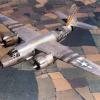
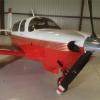

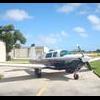
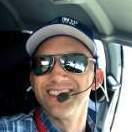





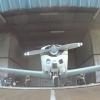
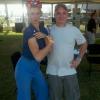
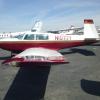


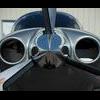

.thumb.jpg.3b7e6053543e5b3f345615b9eb4a086e.jpg)

